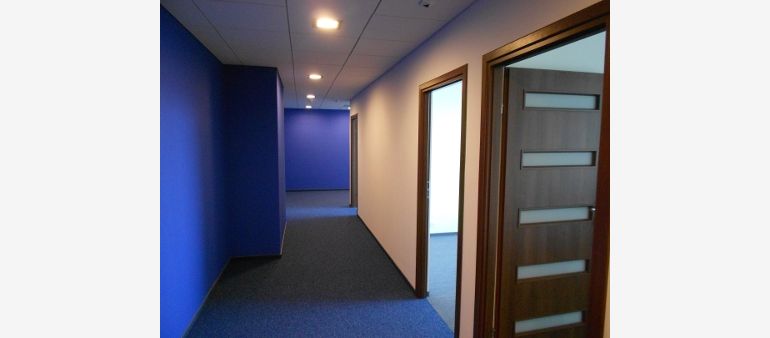In the series of articles The Perfect Office Building: Expectations and Potential we present how the expectations of the tenants are met by the potential of the developers within office space market.
Progress on the office space market is linked to the concurrent development of specialised architectural and design services aiming at state of the art office buildings.
Omnipresent open space
By far the most distinctive and still widely applied trend in office space interior designs is minimalism when it comes to decorations, and open space. The new tendency results from the need to optimise work space for growing numbers of new employees and the necessity to economise space use. Although open space seems to be a relatively new phenomenon it is worth noting that offices were designed like that already at the end of the 19th century.
Details changed over the years, for example in some office buildings new partition walls were introduced, they were to provide employees with the feeling of security and privacy. However, most employees admit that working in open space, despite of separate cubicles, is stressful and the noise makes it difficult to focus on the tasks. Still, large span offices have many advantages such as the possibility to easily rearrange the office space and low costs resulting from high efficiency of the space.
Western Europe is dominated by so called cell offices which provide the employees with separate work space. Nevertheless, in some countries, for example in Denmark, the general tendency is to depart from cell offices towards open spaces. The trend is largely influenced by American corporations where open space is a standard approach which is supposed to help the managers supervise the work. According to design specialists in the future office space will be most probably based partially on open space and partially on cell systems.
Functionality comes first
Modern office space designs are focused on high functionality and usability. Boardrooms are designed taking into account the character of the meetings which will be held there. It means that it is necessary to fit suitable technological solutions (internet access, video conferencing system). It is very important to plan proper communication links between rooms and make meeting spaces easily accessible for everyone. Communication solutions should be also considered at the time of planning new technologies which facilitate moving around the office.
Social areas where the employees spend their breaks play an important role in office space designs. So called relaxation rooms are equipped for example with comfortable sofas and armchairs where one can rest, and furniture allowing for less formal meetings. Such places aim at ease and integrating the team beyond work environment. Well designed social areas might have an influence on the increase of the employees' creativity.
Interesting design
It is important that the environment in which the employees work was well matched to the functions and tasks performed. Another significant issue is well designed ergonomics of each work place so that it would correspond to the employee's needs. Specialists in the field say that design plays a crucial role. People who work on office designs very often employ an artistic approach. They aim at creating space that would be functional and inspiring. Office space as far as possible is not designed entirely on rational solutions and schemes. The designers make it intriguing and provoking creative thinking among its users.
In the next article of the series The Perfect Office Buildings: Expectations and Potential we will deal with the influence location has on overall attractiveness of an office building.
